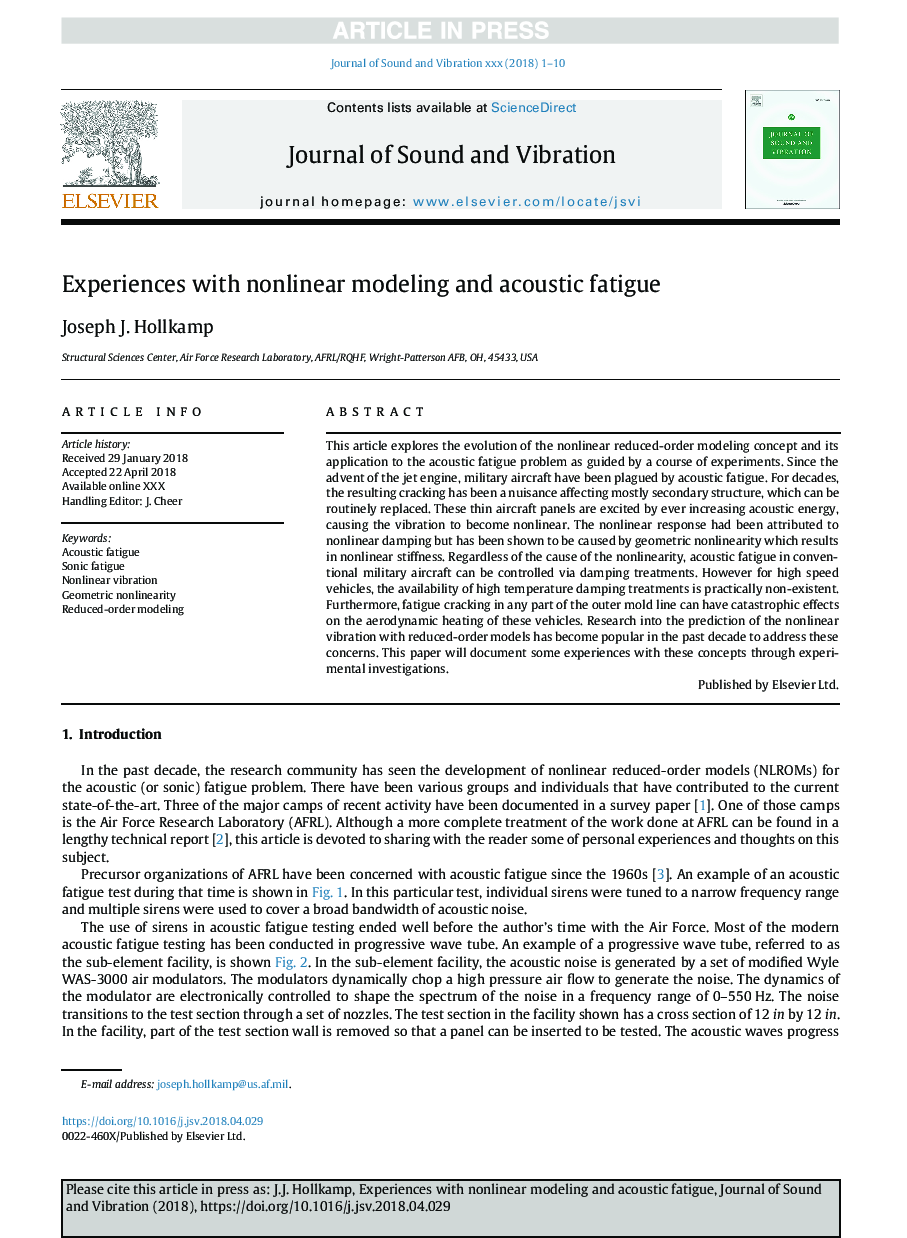| Article ID | Journal | Published Year | Pages | File Type |
|---|---|---|---|---|
| 11024176 | Journal of Sound and Vibration | 2018 | 10 Pages |
Abstract
This article explores the evolution of the nonlinear reduced-order modeling concept and its application to the acoustic fatigue problem as guided by a course of experiments. Since the advent of the jet engine, military aircraft have been plagued by acoustic fatigue. For decades, the resulting cracking has been a nuisance affecting mostly secondary structure, which can be routinely replaced. These thin aircraft panels are excited by ever increasing acoustic energy, causing the vibration to become nonlinear. The nonlinear response had been attributed to nonlinear damping but has been shown to be caused by geometric nonlinearity which results in nonlinear stiffness. Regardless of the cause of the nonlinearity, acoustic fatigue in conventional military aircraft can be controlled via damping treatments. However for high speed vehicles, the availability of high temperature damping treatments is practically non-existent. Furthermore, fatigue cracking in any part of the outer mold line can have catastrophic effects on the aerodynamic heating of these vehicles. Research into the prediction of the nonlinear vibration with reduced-order models has become popular in the past decade to address these concerns. This paper will document some experiences with these concepts through experimental investigations.
Related Topics
Physical Sciences and Engineering
Engineering
Civil and Structural Engineering
Authors
Joseph J. Hollkamp,
